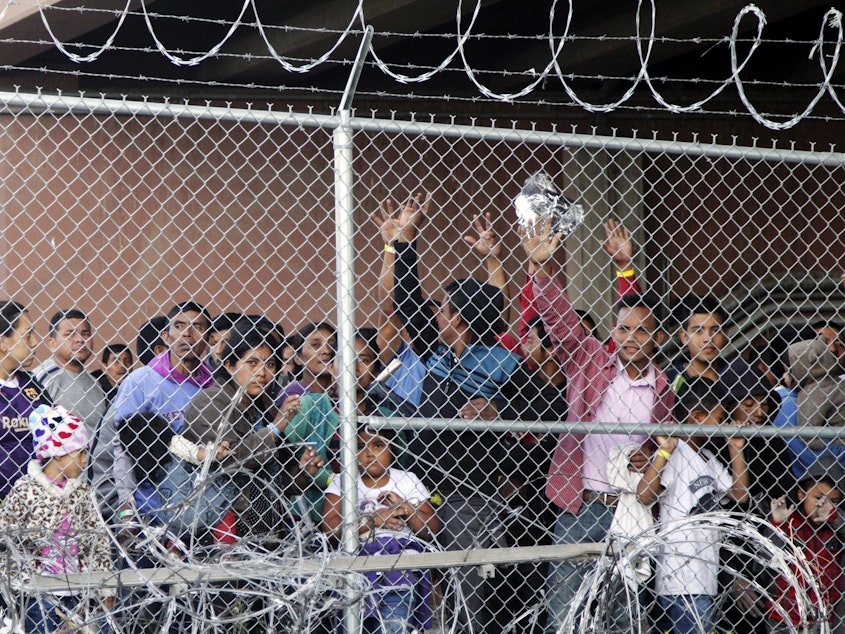Number Of Unaccompanied Minors Entering U.S. Soared In February

The number of asylum-seeking migrants, including unaccompanied minors, crossing the southwest border into the U.S. is soaring, leaving the Biden administration scrambling to find appropriate care and housing for thousands of children.
U.S. Customs and Border Protection released the latest statistics on Wednesday showing agents encountered nearly 3,500 migrants a day during February 2021, a 28% increase over January. Among them, the number of children and families seeking to enter the U.S. more than doubled in the same period. And, the number of unaccompanied minors from Central America also rose 60% over January to more than 9,400.
The recent influx of migrants has been rising since April 2020 due to ongoing violence, natural disasters, food insecurity, and poverty in Guatemala, El Salvador and Honduras, officials said.
The sharp increase of minors has left CBP clambering to move children quickly from detention in crude Border Patrol holding cells to temporary shelters appropriate for adolescents.
"Our goal is to ensure that CBP has the continued capability to efficiently transfer unaccompanied children to [Department of Health and Human Services] as quickly as possible, consistent with legal requirements and the best interest of the children," CBP said in a statement.
But the administration has been unable to keep up with the demand. On Tuesday, 2,800 unaccompanied children were awaiting placement in shelters but there were fewer than 500 beds available to accommodate them, CNN reported.
By law, minors who make their way into the country without a parent or guardian must be turned over to the Department of Health and Human Services 72 hours after they're taken into custody by Border Patrol. They are then placed with a sponsor, which can be a parent or relative already living in the United States. But that process is reportedly taking much longer, causing a serious bottleneck made even worse by housing caps put in place as a result of the coronavirus pandemic. HHS has cut the number of beds for children by almost half to prevent the spread of COVID-19.
"The children are approaching the border now because after fleeing their home countries in Central America, they have not been able to access the border for a year due to Title 42," Megan McKenna, a spokeswoman for Kids In Need of Defense, an advocacy group for unaccompanied minors, told NPR.
Title 42 was put in place by the Trump administration and allows the government to block the entrance of noncitizens who may carry diseases. The Biden White House has kept the rarely used law in place.
McKenna added: "They are seeking a chance to ask for U.S. protection as they have a right to do under U.S. law. We are seeing the results of the pent-up demand for access to life-saving protection. The violence that drove them to the U.S. border has only worsened over the last year."
In an effort to head off a child detention crisis, like ones that challenged Presidents Obama and Trump in 2014 and 2019, the Biden administration announced it's restoring shelter capacity to pre-pandemic levels.
On Wednesday Roberta Jacobson, the White House's Coordinator for the Southern Border, said Biden is restarting a youth program that would allow an estimated 3,000 Central American children who are already approved by the government to join their parents in the U.S. They've been caught in legal limbo for years after Trump abruptly cancelled the Obama-era program. [Copyright 2021 NPR]

